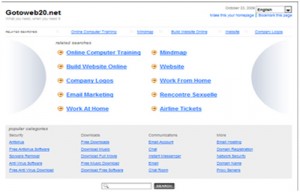Aggregation, syndication and the social engine
Explain how the Elgg social engine works on a Web site where it is installed?
Is this the type of application you want on your Web server in the workplace?
http://www.guardian.co.uk/education/2006/mar/07/elearning.technology13
Elgg is built on LAMP[i] it is open source software, released under the GPL[ii]. Elgg has its own system of plug-ins and also supports RSS, OpenID, FOAF and XML-RPC for integration with most blogging sites.
Elgg provides each user with their own blog, file repository, online profile and RSS reader and their content can be tagged with keywords - connecting them to users with similar interests and giving the ability to create their own PLN(Personal Learning Network). It is different to other blog facilities or commercial Social Networking sites such as Facebook in the amount of control users are given over who can access the content they publish. Each individual profile item, blog post or uploaded file can be assigned its own access restriction, ranging from being fully public to only readable by a selected user or group of users.
New Elgg users begin by creating an identity which says who they are and what they are interested in. Published items can be tagged and the software uses these tags to connect other users with similar interests. Read the rest of this entry »


